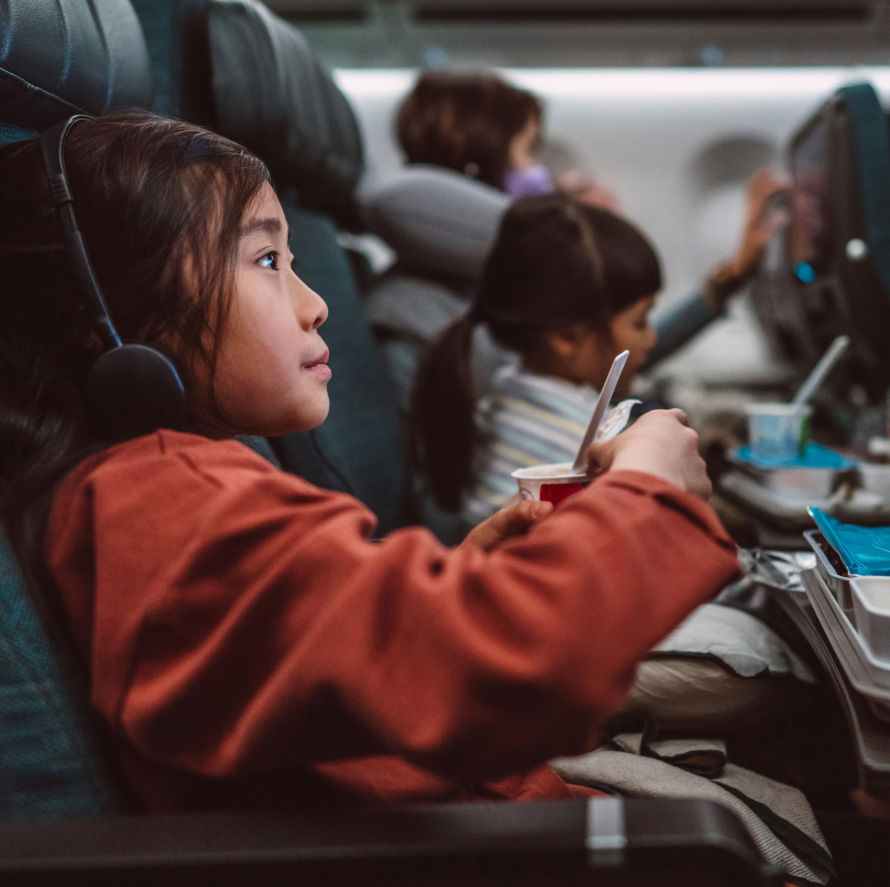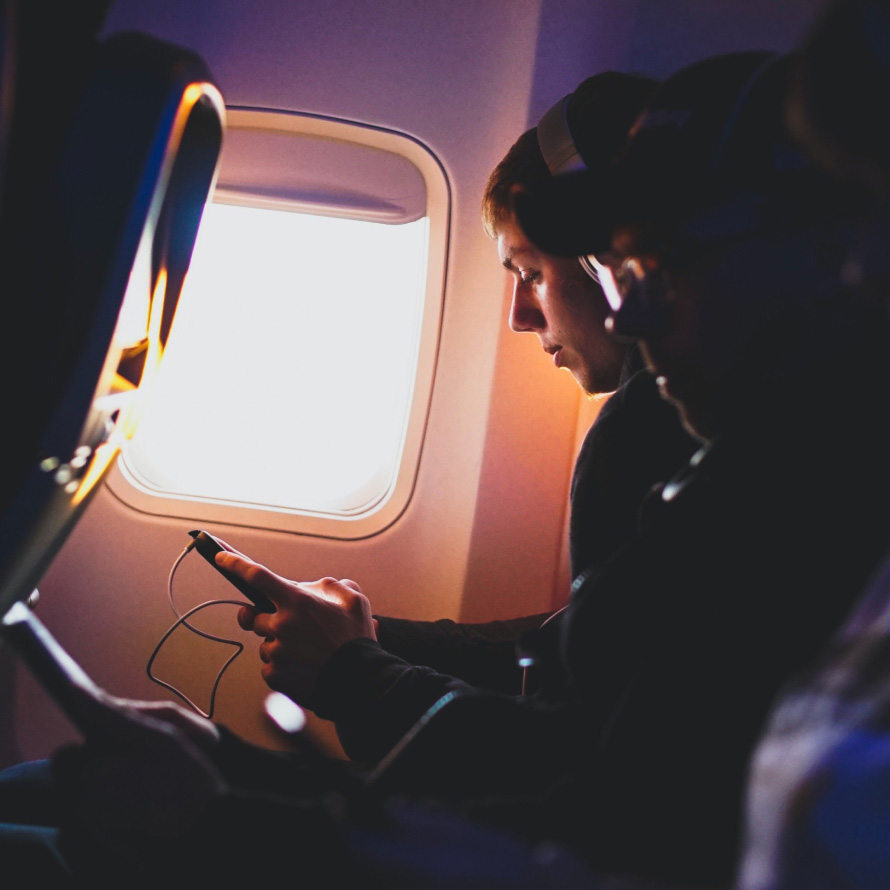Amadeus Insights
Contents
04Merchandising
and distribution
(including NDC)
In the coming years, as the transition to modern retailing with Offers & Orders continues, airlines will also remain focused on effectively merchandising ancillary services and taking them to market through a mix of channels, including direct and via travel agency partners. When working with agencies, airlines are focused on maximizing the potential of both traditional and new distribution standards like IATA’s New Distribution Capability (NDC). This section of the report recaps airline perspectives on these issues.
Focus on ancillaries offers opportunity to drive revenue.
LCCs told Travel Technology Investment Trends researchers ancillary revenues accounted for, on average, 29% of overall revenue.
For half of respondents, ancillary revenues represent between 30-50% of overall income. However, no LCC said it generated more than half of total income from ancillary sales.
Among FSCs, the additional revenue generated by ancillary services was still a significant 23.5% on average, highlighting the importance of effective merchandising for both segments.
Top ancillary service categories
currently offered by LCCs today:
%
Extra legroom, bags, speedy
boarding, flexible tickets
%
Airport
(fast-track, parking and lounge)
%
Destination
tours and activities
%
Holidays
full holiday packages
%
Ground transport
car, rail or bus
Top ancillary service categories LCCs
plan to add over the next three years:
%
Services for
business travelers
%
Merchandise
(duty free, consumer products)
%
Holidays
(fully packaged holidays
combining all elements)
%
Financial services / fintech
(e.g. payments,
Foreign Exchange (FX) services)
%
Hospitality
(hotels or apartments)
Close to half of respondents consider their LCC as offering complete holiday packages today.
Interestingly, a further 30% said their LCC intended to offer complete holiday packages over the coming three years, which would take the figure to 80% as this segment of the industry embraces third-party product bundles.
Perhaps unsurprisingly, the majority of LCCs said they currently offer ancillaries related to the flight, including extra bags and legroom, closely followed by airport services, such as parking, and expedited boarding.
Around a third of respondents said they already offer ancillary services aimed specifically at business travelers. These come in bundles that include lounge access, speedy boarding and fast-track.
However, 38% plan to add this category of ancillary service over the next three years, suggesting LCCs are tailoring their product offer specifically to attract higher yielding business travelers.

Travel sellers
offer the chance
for effective merchandising.
When asked about the role travel agencies play when merchandising ancillary products, nearly half of airlines said 11-20% of additional revenue is generated by travel agencies.
When asked about the challenges involved with merchandising in the indirect channel:
LCCs pointed to the cost of travel agency distribution as their top challenge (42%), followed by the difficulty of offering dynamic prices via travel agencies (36%).
For FSCs, the top challenge is offering a dynamic price for offers via travel agencies (42%), followed by controlling consistent offers across multiple channels (40%).
However, airlines are seeking to directly address many of these challenges over the coming year, with 46% planning to introduce dynamic prices for offers made via agents. Some 43% are also planning to make ancillary services available via travel agencies and planning to personalize offers across the indirect channel.
The move to IATA’s NDC standard is also gaining pace. In fact, for some Amadeus airline customers, around one in every three indirect bookings is now made using NDC. Amadeus has made NDC maturity a key objective, with 98% of travel sellers now NDC-ready.
For FSCs, the biggest challenges when merchandising the offer through travel agencies are:
Offering a dynamic price for offers via travel agencies
Controlling consistent offers across multiple channels
Communicating the added value of higher fare class (upselling)
Personalizing offers in the indirect channel
Incentivizing agents to sell ancillaries or upsell
For LCCs, the biggest challenges when merchandising the offer through travel agencies are:
The costs involved in travel agency distribution
Offering a dynamic price for offers via travel agencies
Incentivizing agents to sell ancillaries or upsell
Displaying offers visually (pictures of business class seat)
Connecting to travel agents
“Amadeus offers airlines a range of solutions to give them control over how their flights and ancillary products are presented and sold”
Dave Evans
CEO, Navitaire
Amadeus Travel Unit

The rollout of NDC, which allows airlines to distribute content in new ways, creating bundles and tailored offers, remains a hot topic.

FSCs estimate an average of 25% of indirect sales will be completed through the NDC standard over the next year, with this rising to an average of 31% in 2026 and 35% in 2030.
LCCs expect 25% of their overall indirect sales to be made using NDC within the next 12 months, with the figure anticipated to rise to 30% by 2026 and 38% by the end of the decade.
These figures demonstrate that respondents expect a gradual adoption of the new standard over several years. However, only 4% of respondents anticipated 100% of indirect sales would be made using NDC by 2030, as IATA anticipates.
Anticipated % of indirect sales through NDC – LCCs
Anticipated % of indirect sales through NDC – FSCs
“Collectively across the industry, we are in the middle of a transformation towards a more traveler-centric ecosystem”
Elena Ávila
EVP, Travel Distribution
Amadeus
When asked about the top drivers for selling via travel agencies, LCC respondents said:
%
To reach more potential customers
%
To ensure we can provide the flight within holiday packages
%
To improve our competitive position
%
To improve reach in countries where our brand is less well known
%
To reach ‘higher value’ customers e.g. business travelers
More than a third of all airlines (39%) view NDC as an opportunity to deliver dynamic pricing and bundling over the next two years, while 37% see it as an opportunity to enable promotional fares. Around a third of airlines view NDC as a chance to gain greater control over the distribution of their products and to present richer information to travelers while shopping.
At the same time, 52% of FSC respondents and 32% of LCCs cited ‘presenting richer information about offers’ (including onboard menu choices, detailed descriptions of different seats or frequent flyer mileage information) as a priority, while 38% of LCCs sought to highlight promotional fares.
The top indirect distribution capabilities FSCs are seeking to improve or introduce:
%
Offering dynamic prices for
offers via travel agencies
%
Incentivizing agents to sell ancillaries
%
Communicating the added value of higher fare classes
%
Making ancillary services
available via travel agencies
%
Personalizing offers in the indirect channel
Dynamic pricing is the top indirect distribution capability FSCs are seeking to introduce (48%) as airlines seek to better match offers and prices to the specific traveler conducting the search. FSCs are also very focused on better communicating the value of higher fare classes (46%) and working with agents to drive ancillary sales (46%).
More than a third of all airlines (39%) view NDC as an opportunity to deliver dynamic pricing and dynamic bundling over the next two years, while 37% see it as an opportunity to enable promotional fares.
Around a third of airlines view NDC as a chance to gain greater control over the distribution of their products and to present richer information to travelers while shopping.
At the same time, 52% of FSC respondents and 32% of LCCs cited ‘presenting richer information about offers’ (including onboard menu choices, detailed descriptions of different seats or frequent flyer mileage information) as a priority, while 38% of LCCs sought to highlight promotional fares.

Overcoming concerns over excess polling.
One of the much-discussed challenges surrounding NDC is the additional workload airline IT systems must handle to respond to huge volumes of low-intent-to-book search traffic.
Underlining the scale of this issue, just 6% of respondents said they thought their existing IT systems would be able to handle this additional polling.
In response, a significant 61% of those surveyed said they are looking for a cache-style solution that still allows the airline to control the offers it makes available. Some 60% of LCCs said they would also invest in their airline’s IT systems in preparation for the additional polling required with the NDC model, compared to just 4% for FSCs.
However, half of airlines said this problem was so acute that they planned to ‘scale back their NDC ambitions’ due to increased volumes of queries.
“IATA has set a goal for 100% of airline bookings to be carried out over NDC channels by 2030”
Bénédicte Isnardon
Associate Director Search & Inspire,
Product Marketing Management, Amadeus
Meeting traveler demands through servicing.
When it comes to servicing, the top airline challenges cited were the ability to personalize service to make it a part of the airline offer (42%) and allowing travelers to self-serve involuntary rebooking during disruption (40%).
The findings tie in with wider trends from the Travel Technology Investment Trends, suggesting airlines are prioritizing the move to self-service options across every element of the trip.
For LCCs, the most challenging elements of servicing are:
Personalize service flexibility to make it part of the airline offer
Allow travelers to self-serve involuntary rebooking during disruption
Ability to inform contact center and airport ground staff on how to serve customers based on specific traveler history
Tailor priorities and benefits based on passenger value
Allow travelers to self-serve voluntary rebooking of ancillary services digitally
For FSCs, the most challenging elements of servicing are:
Personalize service flexibility to make it part of the airline offer
Allow travelers to self-serve involuntary rebooking during disruption
Ability to inform contact center and airport ground staff on how to serve passengers based on specific traveler history
Recover passenger trust during and post disruption
Allow travelers to self-serve voluntary rebooking of flights digitally